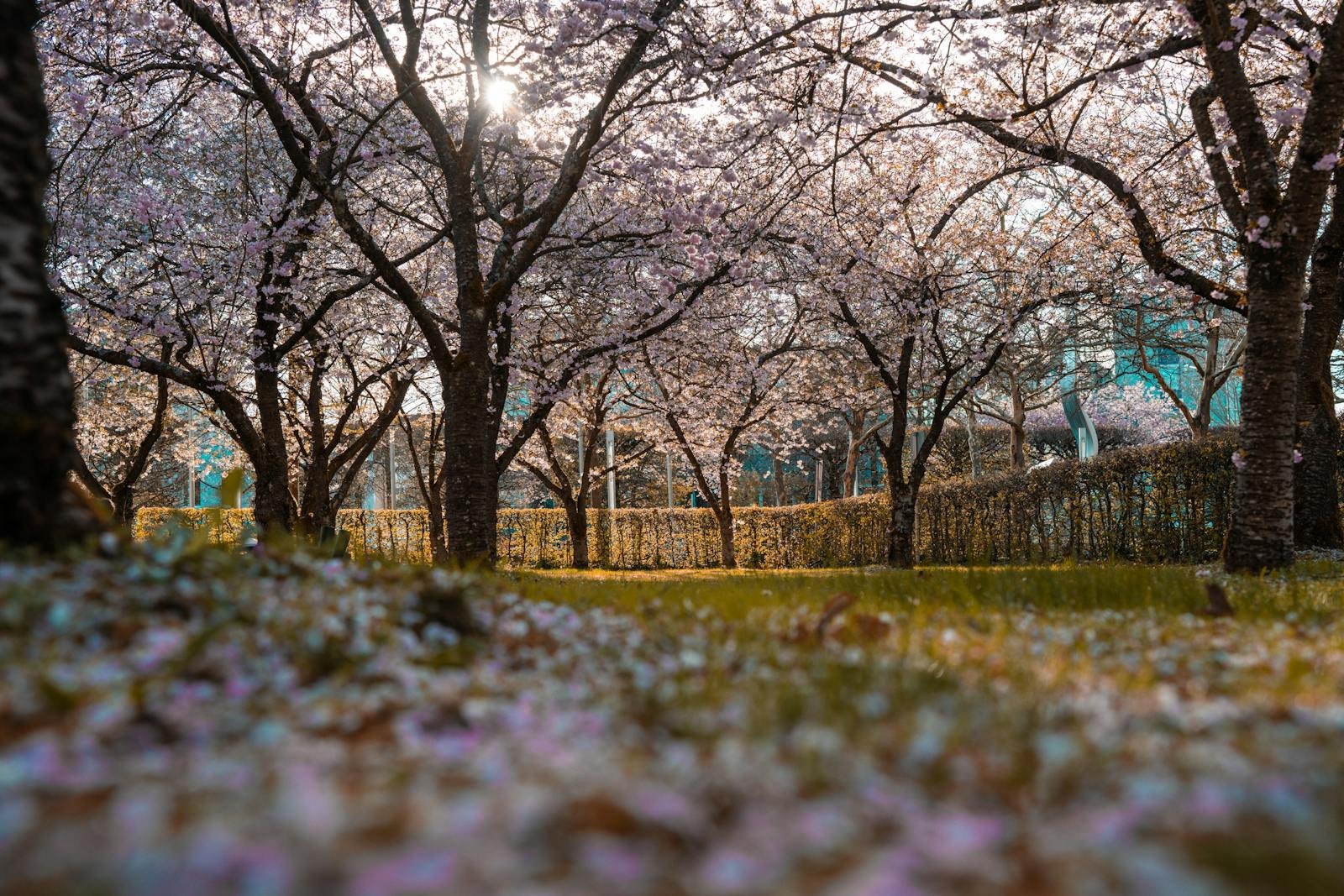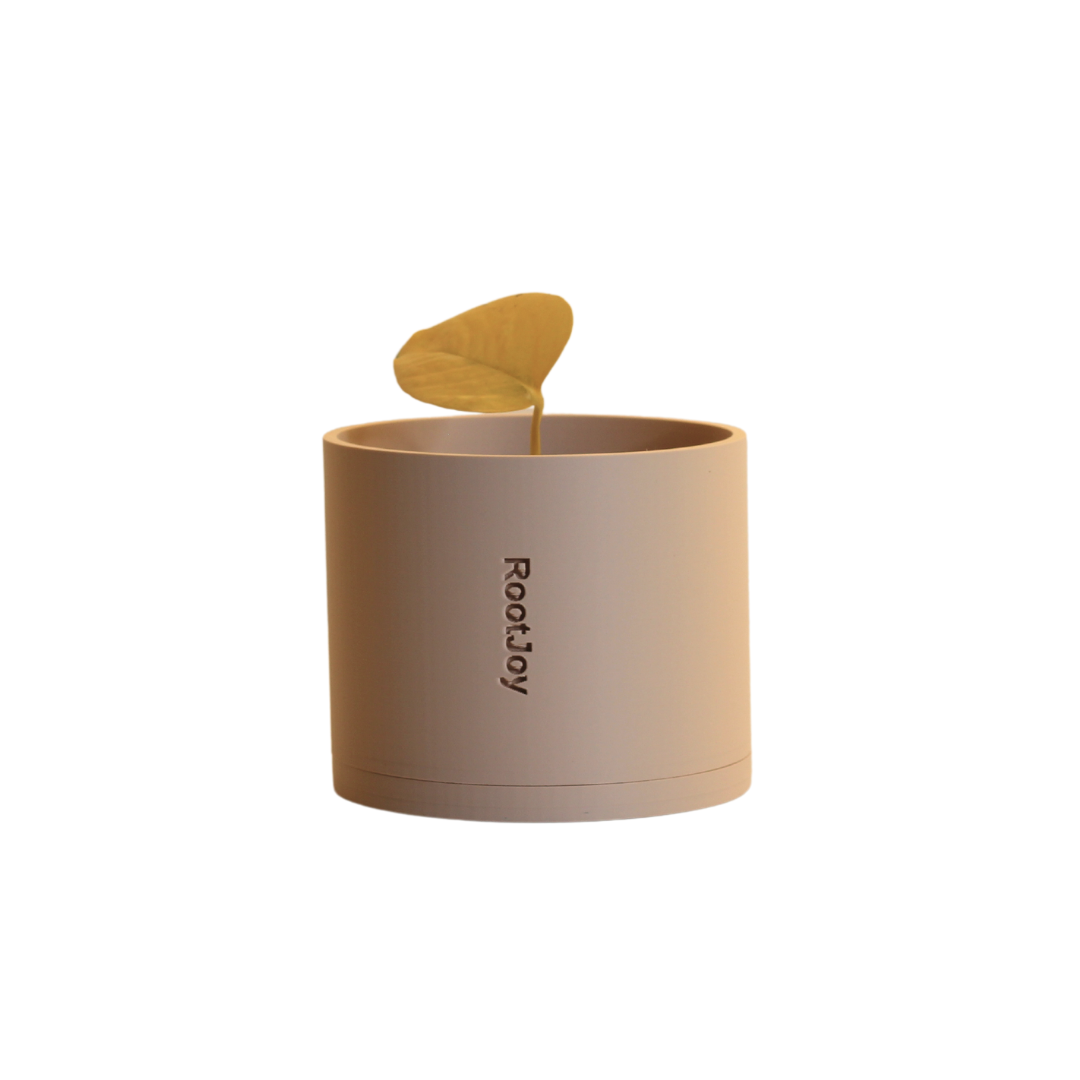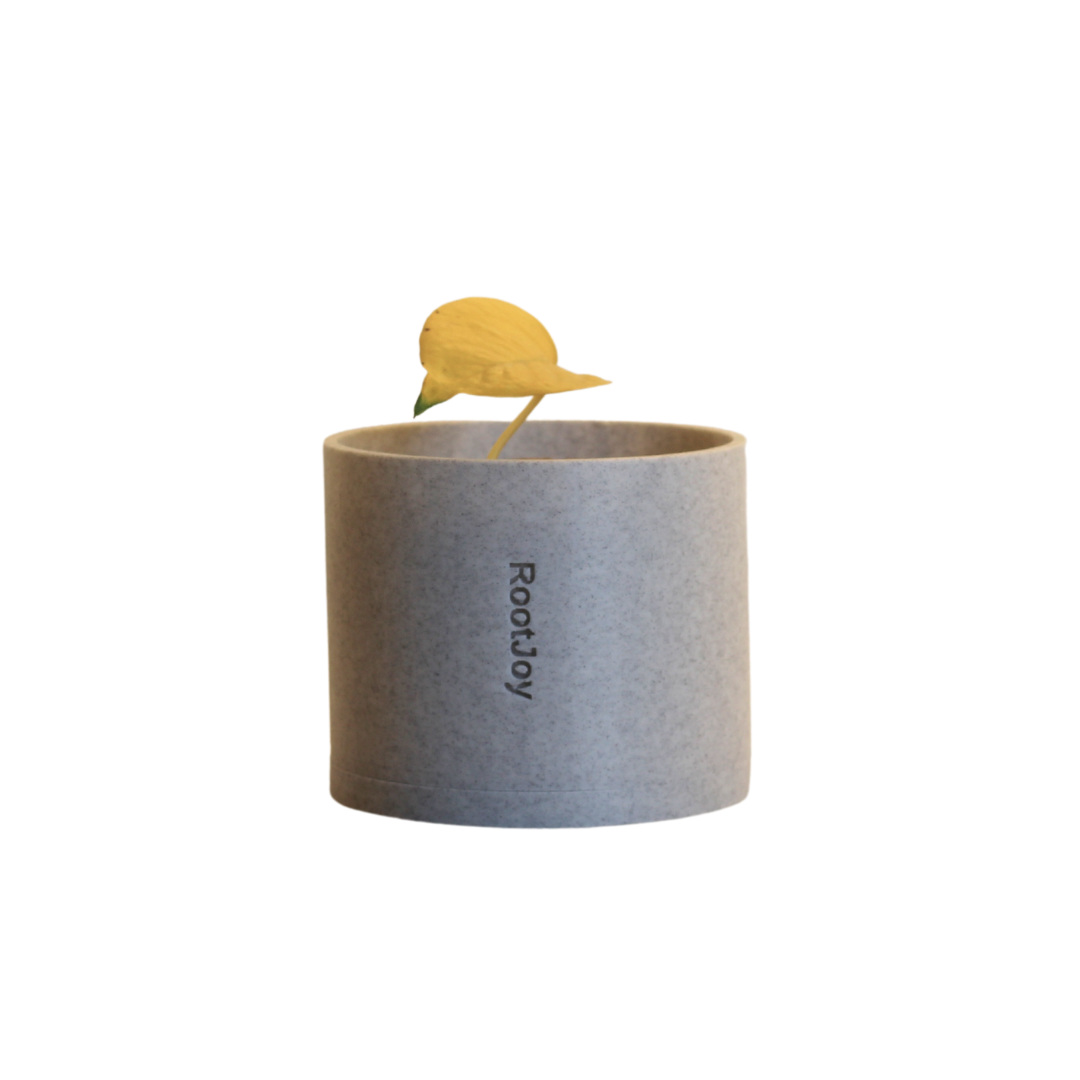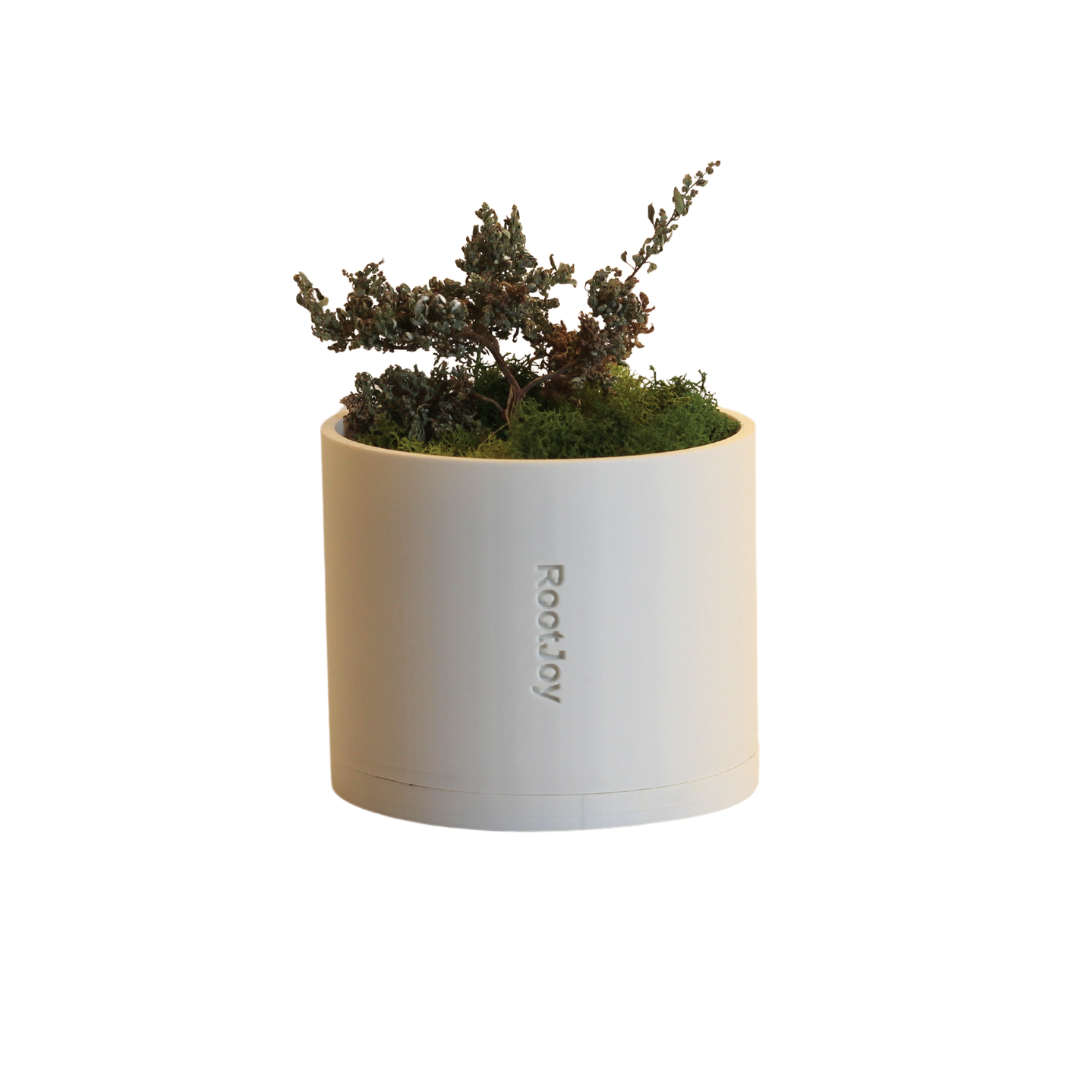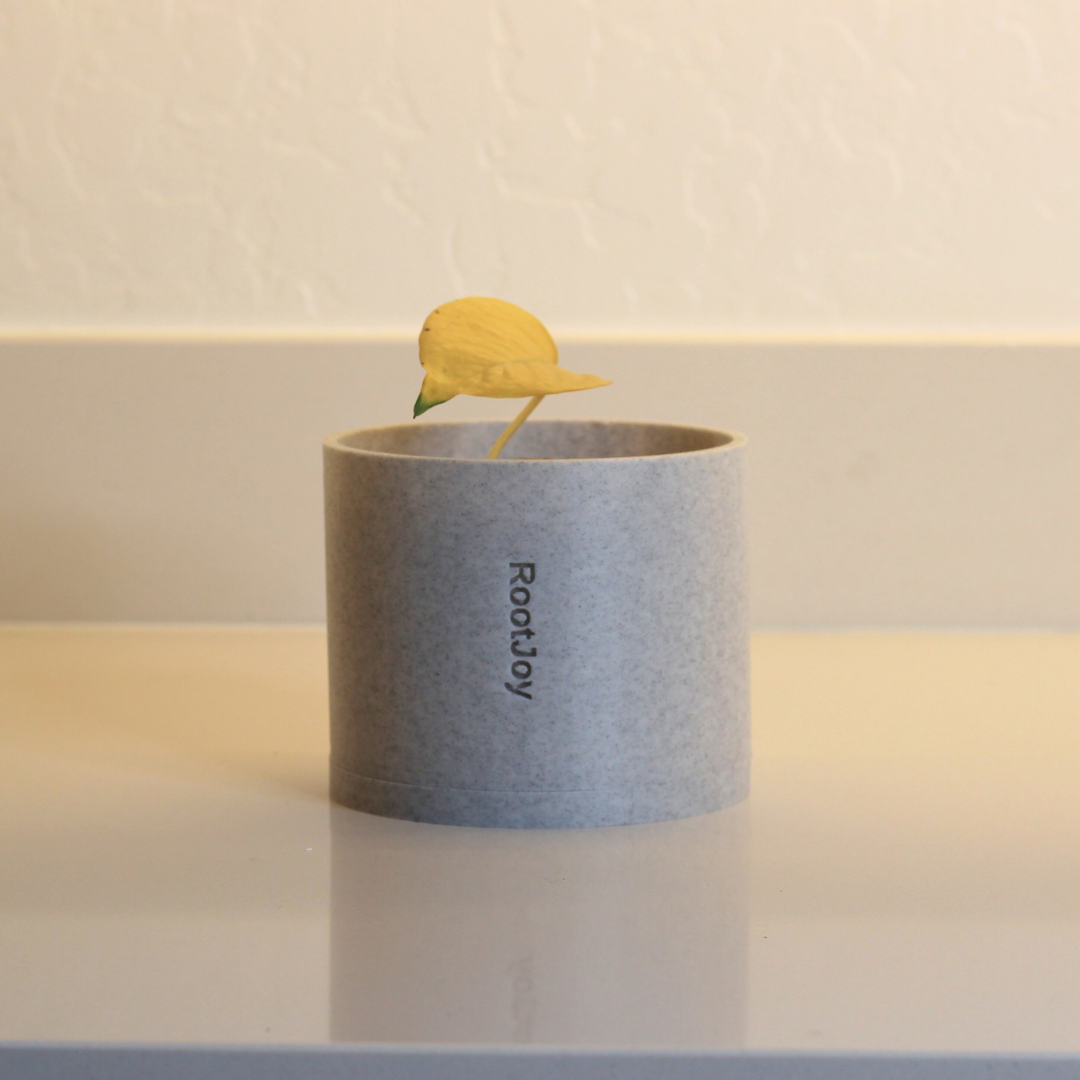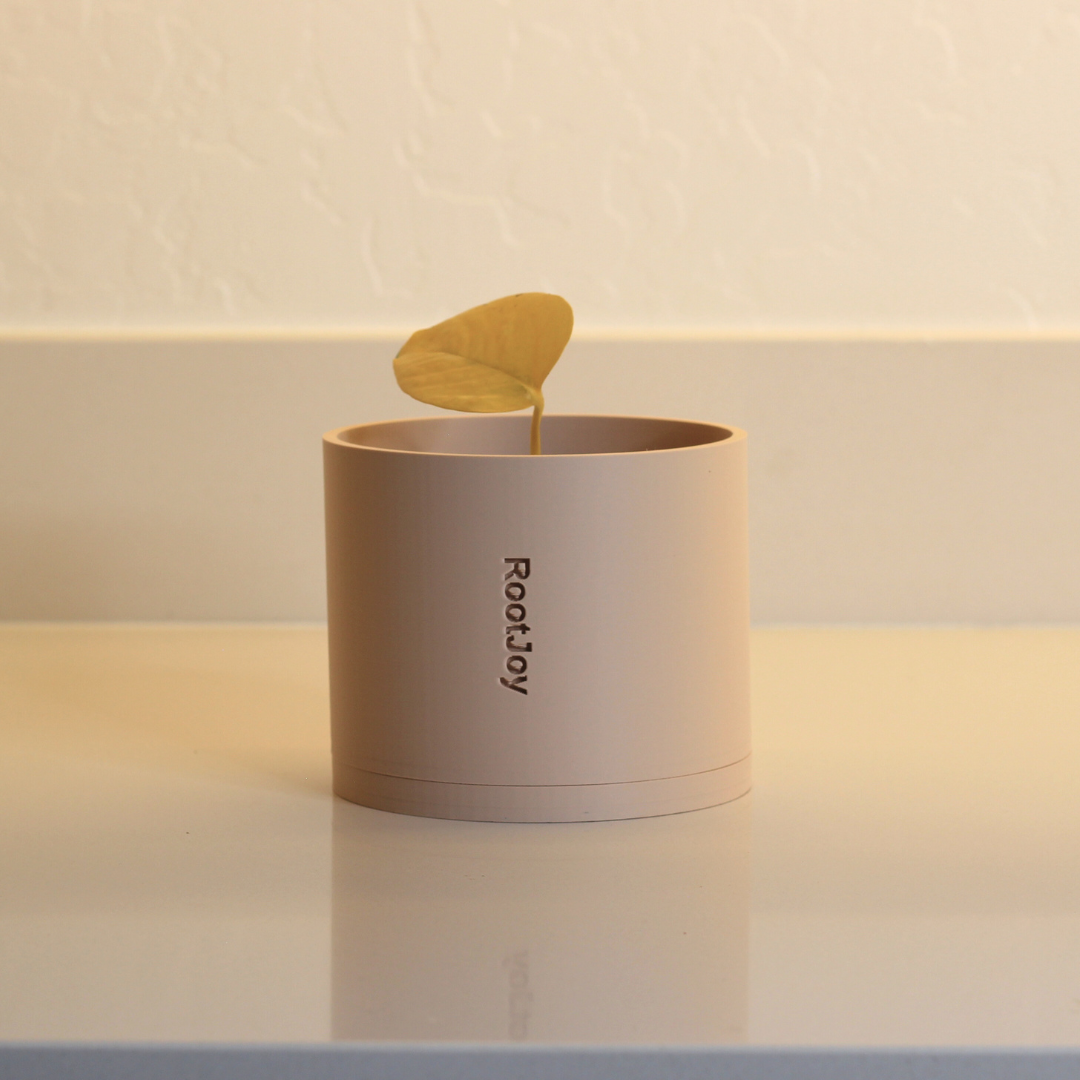Los Angeles Gardening
Los Angeles, California, USA, is a vibrant hub for urban gardening on the west coast of North America. With its Mediterranean climate, diverse microclimates, and sprawling urban environment, the city offers endless opportunities for cultivating lush gardens. From container gardening to large-scale urban farms, Los Angeles supports year-round planting and innovative gardening techniques, making it a gardener’s paradise. 🌱🌞
Los Angeles Gardening
Los Angeles, California, USA, is a vibrant hub for urban gardening on the west coast of North America. With its Mediterranean climate, diverse microclimates, and sprawling urban environment, the city offers endless opportunities for cultivating lush gardens. From container gardening to large-scale urban farms, Los Angeles supports year-round planting and innovative gardening techniques, making it a gardener’s paradise. 🌱🌞
Los Angeles Gardening Insights
✅ Overall Gardening Score
🌦️ Mediterranean Climate
🌫️ Fog Impact
🌡️ Average Rainfall:
🌱 USDA Zone
🌍 Microclimates
🪵 Sandy Soil
🪨 Hilly Terrain
🌾 Native Plant Options
🦋 Pollinator Support
🥬 Vegetable Suitability
🌿 Herb Suitability
🌸 Flower Potential
🍓 Fruit Growth
💧 Water Access
🍂 Mulching Effectiveness
❄️ Winter Planting Potential
🌸 Spring Planting Potential
☀️ Summer Crop Potential
🍁 Fall Planting Suitability
🪜 Vertical Gardening
🪵 Raised Beds
🌿 Container Gardening
🐛 Pest Management
🍃 Fog and Mildew Risk
🌬️ Wind Challenges
🌱 Community Gardening Access
📚 Educational Resources
🛠️ Local Gardening Tools
♻️ Composting Availability
🌬️ Water Conservation Practices
🌟 Smart Gardening Options
🎨 Garden Design Potential
🌫️ Fog Challenges
🛤️ Urban Gardening Potential
🪱 Soil Amendment Needs
🌳 Shade Gardening
🏡 Wildlife Support
🥗 Edible Gardening
🌉 Overall Urban Gardening Environment
📅 Seasonal Suitability
🛝 Kid-Friendly Gardening
🐕 Pet-Safe Gardening
🔧 DIY Gardening Projects
📖 Historical Gardening Context
🏆 Local Gardening Inspiration
🪧 Urban Farm Engagement
🌍 Environmental Efforts
🚰 Graywater Use
🏗️ Rooftop Gardening
🌾 Native Landscaping Potential
🌟 Aesthetic Gardening
🏙️ Neighborhood Variations
🛋️ Relaxation Spaces
🌤️ Real-Time Weather Impact
🌊 Coastal Influence
🍂 Seasonal Composting
🐦 Bird Gardening
🔄 Crop Rotation Potential
City Overview:
Description
🌐 Location
🌍 Continent
Situated in North America, bordered by the Pacific Ocean, Los Angeles boasts a unique Mediterranean gardening environment.
👥 Population
Home to approximately 3.9 million residents (2023), urban gardening offers a sustainable solution to limited space in this sprawling metropolis.
📐 Size
Spanning 503 square miles (1,302 km²), Los Angeles features diverse neighborhoods with varying microclimates for gardening.
📍 Coordinates
Positioned at 34.05°N, 118.25°W, Los Angeles’s coastal geography influences its gardening practices.
Climate and Growing Conditions
🌦️ Climate Type
Los Angeles enjoys a Mediterranean climate with hot, dry summers and mild, wet winters, perfect for year-round gardening.
🌡️ Average Temperature
Ranges from 48°F (9°C) in winter to 84°F (29°C) in summer, supporting a wide variety of plants.
🌬️ Coastal Breezes
The cool Pacific Ocean moderates temperatures, creating favorable conditions for herbs, vegetables, and fruit plants.
🌧️ Rainfall
Receives about 15 inches (380 mm) annually, concentrated in the winter months, necessitating irrigation during the dry season.
Growing Zones
🌱 Growing Zone
Los Angeles is primarily in USDA Zones 10a and 10b, with warmer areas classified as Zone 11a.
🌡️ Frost-Free Area
Frost is rare, allowing gardeners to plant and harvest year-round without interruption.
🌿 Microclimates
Inland neighborhoods are hotter and drier, while coastal areas benefit from cooler, more humid conditions, making a variety of crops possible.
Soil and Terrain
🪵 Soil Types
Los Angeles features predominantly sandy and clay soils, which benefit from compost and other soil amendments for improved fertility.
🪱 Soil Challenges
Clay soil retains water and can become compacted, while sandy soil drains quickly, requiring organic mulch or conditioners.
🪨 Hilly Terrain
Rolling hills and slopes are common, encouraging creative solutions like terraced gardening to optimize water use.
🪴 Urban Gardening
Raised beds, vertical gardening systems, and container gardens are ideal for maximizing space in urban settings.
Native Plants and Biodiversity
🌾 Native Species
Plants like California poppies, toyon, and white sage thrive naturally and require minimal water or maintenance.
🦋 Pollinator Support
Milkweed and other native flowers attract bees, butterflies, and other essential pollinators.
🐦 Wildlife Gardens
Incorporate native shrubs and water features to attract hummingbirds, finches, and other local bird species.
Best Plants to Grow
🥬 Vegetables
Heat-tolerant crops like tomatoes, peppers, and zucchini excel in Los Angeles’s sunny climate.
🌿 Herbs
Mediterranean herbs such as rosemary, oregano, and thyme flourish in dry, warm conditions.
🍓 Fruits
Citrus trees, figs, and avocados thrive in the mild, frost-free environment.
🌼 Flowers
Drought-resistant blooms like lavender, marigolds, and daisies add color and require minimal upkeep.
🌵 Succulents
Hardy plants like aloe and echeveria are perfect for Los Angeles’s arid regions.
Water Conservation and Irrigation
💧 Drip Irrigation
Efficiently deliver water directly to plant roots, conserving water in the city’s dry conditions.
🌂 Rainwater Harvesting
Use rain barrels to collect and store water during the winter for use in the dry season.
🍂 Mulching
Mulch helps retain soil moisture, reduce evaporation, and regulate temperature during the hot summer months.
Check out WaterwiseInnovations.com for more info on Los Angeles water management
Seasonal Planting
❄️ Winter Planting
Plant cool-weather crops like broccoli, kale, and carrots for a steady winter harvest.
🌸 Spring Planting
Start tomatoes, beans, and cucumbers as temperatures begin to warm.
☀️ Summer Crops
Heat-loving plants such as eggplants, melons, and peppers thrive in sunny inland areas.
🍁 Fall Tasks
Prepare soil with compost and plant cover crops to enrich the soil for the next growing season.
Urban Gardening Techniques
🪜 Vertical Gardens
Save space by growing vining crops like peas and beans on trellises or walls.
🪵 Raised Beds
Provide excellent drainage and nutrient-rich soil for vegetables, flowers, and herbs.
🌿 Container Gardening
Perfect for balconies, patios, and small yards, containers offer flexibility for a variety of plants.
🛤️ Pathways
Use gravel or stepping stones for practical and visually appealing access to garden beds.
Pests and Challenges
🐛 Common Pests
Aphids, whiteflies, and spider mites are common pests; natural remedies like neem oil can help.
🐞 Beneficial Insects
Encourage ladybugs and lacewings to naturally control pest populations.
🍃 Powdery Mildew
Ensure proper plant spacing and airflow to minimize fungal issues in humid areas.
🌬️ Heat Stress
Protect sensitive plants with shade cloth or water more frequently during extreme heat.
Community and Resources
🌱 Community Gardens
Explore shared gardening spaces through organizations like the Los Angeles Garden Council.
📚 Gardening Workshops
Participate in local workshops to learn sustainable and innovative gardening techniques.
🪧 Urban Farms
Visit spaces like The Growing Experience for fresh produce and gardening inspiration.
🤝 Garden Clubs
Connect with fellow gardening enthusiasts through the Los Angeles Horticultural Society.
Sustainability Practices
🌾 Native Landscaping
Focus on drought-tolerant plants to reduce water use and maintenance.
🍃 Organic Practices
Avoid synthetic fertilizers and pesticides, opting for natural solutions to enrich soil and protect plants.
♻️ Composting
Turn food scraps and yard waste into nutrient-rich compost for your garden.
🌟 Solar Energy
Use solar-powered lights and tools to enhance your garden sustainably.
Accessibility and Design
🛋️ Rest Areas
Add seating to create relaxing spaces within your garden.
🛝 Child-Friendly Gardens
Include edible plants and sensory features to engage children in gardening.
🐕 Pet-Safe Plants
Avoid toxic species like lilies and ensure a safe garden for pets.
Innovative Gardening Ideas
🌟 Smart Irrigation Systems
Automate watering schedules for optimal plant care and water efficiency.
🛠️ DIY Projects
Build raised beds, compost bins, or self-watering planters for personalized gardening solutions.
🎨 Themed Gardens
Create unique spaces like butterfly gardens, sensory gardens, or Mediterranean-inspired designs.
Key Facts About Los Angeles
🌍 Environmental Leadership
Los Angeles is a pioneer in sustainability and urban gardening initiatives.
📜 Gardening History
The city has a long history of urban farming, contributing to its vibrant gardening culture.
🏆 Famous Gardens
Visit the Los Angeles County Arboretum and Botanical Garden for inspiration and rare plant collections.
Climate and Growing Conditions in Los Angeles
Los Angeles boasts a Mediterranean climate, characterized by hot, dry summers and mild, wet winters. This climate provides the ideal conditions for year-round gardening, making the city a haven for gardeners seeking a diverse range of planting options. With average temperatures ranging from 48°F (9°C) in winter to 84°F (29°C) in summer, plants enjoy a long growing season without the interruptions of frost or extreme cold.
Rainfall and Water Considerations
The city receives about 15 inches (380 mm) of rain annually, with most of it concentrated in the winter months. While the dry summers necessitate supplemental watering, gardeners can mitigate this with efficient irrigation systems like drip irrigation and rainwater harvesting during the wet season.
Coastal Breezes and Microclimates
Proximity to the Pacific Ocean provides cooling coastal breezes, which moderate temperatures in neighborhoods closer to the coast. Inland areas, however, experience hotter and drier conditions, offering an opportunity for heat-tolerant plants like tomatoes, peppers, and melons. These microclimates enable gardeners to grow a wide variety of crops across the city.
Sunlight Availability
Los Angeles enjoys abundant sunlight, which is crucial for many plants, including fruit trees, vegetables, and herbs. Sun-loving crops such as citrus, zucchini, and rosemary thrive in the consistent warmth and extended daylight hours.
Challenges
Despite its favorable conditions, Los Angeles does pose some challenges for gardeners:
- Low Rainfall: Requires careful water management, making water conservation practices essential.
- Heat Stress: During summer, extreme heat in some inland areas may necessitate shade cloth or frequent watering to protect sensitive plants.
Overall, Los Angeles’s climate provides a fertile environment for a wide range of gardening projects. By understanding and leveraging these growing conditions, gardeners can enjoy lush, productive gardens throughout the year. 🌱🌞
Gardening Tips for Los Angeles
Gardening in Los Angeles offers incredible opportunities due to its favorable climate and diverse microclimates. However, to make the most of your garden, it’s essential to follow strategies tailored to the region’s unique conditions. Here are some practical tips to help your garden thrive year-round:
1. Plan for Microclimates
Los Angeles’s diverse neighborhoods create varying conditions for plants. Coastal areas are cooler and more humid, while inland areas are warmer and drier. Choose heat-tolerant plants like tomatoes, peppers, and succulents for inland gardens and moisture-loving crops like leafy greens for coastal gardens.
2. Optimize Water Use
With low annual rainfall, water conservation is vital:
- Drip Irrigation: Use drip systems to deliver water directly to the roots and minimize evaporation.
- Rainwater Harvesting: Collect rainwater during the wet season to use in dry months.
- Mulching: Add organic mulch to retain soil moisture and reduce water evaporation.
3. Leverage the Long Growing Season
The frost-free environment of Los Angeles allows for continuous planting:
- Plant cool-weather crops like broccoli and kale in winter.
- Transition to warm-weather crops like zucchini, beans, and tomatoes in spring and summer.
4. Improve Soil Quality
The city’s sandy and clay soils often need enrichment:
- Add compost to improve fertility and structure.
- Use organic soil amendments to boost drainage in clay soils or water retention in sandy soils.
5. Incorporate Native Plants
Native plants like California poppies and sagebrush are low-maintenance, drought-tolerant, and attract pollinators like bees and butterflies. Incorporating these into your garden reduces water use and supports biodiversity.
6. Protect Against Pests and Diseases
Common pests in Los Angeles include aphids, whiteflies, and spider mites:
- Introduce beneficial insects like ladybugs to manage pests naturally.
- Regularly prune and space plants to improve airflow and prevent diseases like powdery mildew.
7. Utilize Small Spaces
For urban gardeners with limited space:
- Grow vertically using trellises or wall planters.
- Use containers for herbs, vegetables, and flowers on balconies or patios.
- Try raised beds for better soil management and accessibility.
8. Adapt to Seasonal Changes
While Los Angeles offers year-round gardening, seasons still influence planting:
- Use shade cloth to protect plants during extreme summer heat.
- Add compost and mulch in fall to prepare soil for winter crops.
9. Experiment with Smart Gardening
Take advantage of technology:
- Use smart irrigation systems to automate watering.
- Install sensors to monitor soil moisture and optimize plant health.
10. Join the Community
Los Angeles has numerous gardening groups and workshops:
- Participate in community gardens for shared space and learning.
- Attend local workshops to improve your skills and connect with fellow gardeners.
By following these tips, you can create a thriving, sustainable garden in Los Angeles that maximizes the city’s favorable growing conditions and supports your gardening goals year-round. 🌱
Native Plants and Wildlife in Los Angeles
Los Angeles is home to a diverse range of native plants and wildlife, shaped by its Mediterranean climate and varied geography. Incorporating native species into your garden not only enhances its beauty but also supports the local ecosystem, providing essential resources for pollinators, birds, and other wildlife. Here’s an overview of the native flora and fauna that make Los Angeles gardening unique:
Native Plants
Los Angeles’s native plants are well-suited to the region’s dry summers, mild winters, and occasional droughts. These species thrive with minimal care, making them ideal for sustainable gardening:
- California Poppy (Eschscholzia californica): The state flower, with its bright orange blooms, is drought-tolerant and attracts pollinators.
- White Sage (Salvia apiana): A fragrant herb valued for its resilience and ability to attract bees and butterflies.
- Toyon (Heteromeles arbutifolia): Also known as “California holly,” this shrub produces red berries that are a favorite of local birds.
- Yarrow (Achillea millefolium): A hardy perennial that adds beauty to gardens while supporting beneficial insects.
- Coast Live Oak (Quercus agrifolia): A majestic tree that provides shade, habitat, and acorns for wildlife.
Pollinators
Native plants play a critical role in supporting Los Angeles’s pollinator population, which is essential for healthy gardens:
- Bees: Species like the native bumblebee and carpenter bee thrive on plants like sage and milkweed.
- Butterflies: Monarch butterflies are particularly attracted to native milkweed for laying eggs and feeding.
- Hummingbirds: These tiny birds are drawn to tubular flowers like those of the hummingbird sage (Salvia spathacea).
Birds and Wildlife
Creating a habitat-friendly garden in Los Angeles can attract a variety of birds and animals:
- Hummingbirds: Common in urban gardens, they thrive on nectar from native flowers.
- Scrub Jays: Known for their intelligence, these birds feed on acorns and berries from shrubs like toyon.
- Lizards: Species like the Western Fence Lizard help control garden pests by feeding on insects.
- Coyotes and Small Mammals: In more natural areas, coyotes, rabbits, and squirrels are part of the ecosystem balance.
Gardening with Native Plants
Integrating native plants into your garden has numerous benefits:
- Low Water Use: These plants are adapted to Los Angeles’s dry conditions, reducing the need for irrigation.
- Soil Health: Native plants often require little or no fertilizers, helping maintain soil health naturally.
- Ecosystem Support: By planting natives, you provide food and shelter for local wildlife, fostering biodiversity.
Wildlife-Friendly Gardening Tips
To create a thriving habitat for native wildlife:
- Incorporate Water Sources: Add birdbaths or shallow dishes for pollinators and birds to drink from.
- Plant Layers: Combine groundcovers, shrubs, and trees to create varied habitats for different species.
- Avoid Chemicals: Use organic gardening methods to protect pollinators and other beneficial creatures.
- Add Birdhouses: Provide nesting spaces for birds like finches and sparrows.
By embracing native plants and fostering wildlife-friendly practices, Los Angeles gardeners can create vibrant, sustainable gardens that reflect the beauty of the local environment while supporting its unique ecosystem. 🌾🦋🐦
Sustainable Gardening Practices in Los Angeles
Sustainable gardening is essential in Los Angeles, where the dry Mediterranean climate and urban environment create unique challenges for gardeners. By adopting eco-friendly practices, you can conserve resources, protect the environment, and create a thriving, resilient garden. Here are the key principles and practices for sustainable gardening in Los Angeles:
1. Water Conservation
With an average annual rainfall of just 15 inches (380 mm), efficient water use is critical:
- Drip Irrigation: Install drip systems to deliver water directly to plant roots, reducing waste.
- Rainwater Harvesting: Collect rainwater during the wet season with barrels or tanks to use in drier months.
- Mulching: Apply organic mulch to retain soil moisture, regulate temperature, and minimize evaporation.
- Drought-Tolerant Plants: Focus on native plants and succulents that thrive with minimal watering.
2. Soil Health Management
Healthy soil is the foundation of a sustainable garden:
- Composting: Turn kitchen scraps and garden waste into nutrient-rich compost to enrich your soil.
- Soil Amendments: Use organic materials like manure, worm castings, or leaf mold to improve fertility and structure.
- No-Till Gardening: Minimize soil disturbance to preserve beneficial organisms and prevent erosion.
3. Native and Climate-Appropriate Plants
Choosing the right plants ensures lower maintenance and resource use:
- Native Plants: California poppies, sage, and toyon are ideal for Los Angeles’s climate and require less water and care.
- Mediterranean Plants: Lavender, rosemary, and olives thrive in the region’s hot, dry summers.
- Pollinator-Friendly Plants: Attract bees, butterflies, and hummingbirds with milkweed, yarrow, and hummingbird sage.
4. Organic Gardening
Eliminate synthetic chemicals to protect the environment and local wildlife:
- Natural Fertilizers: Use compost, fish emulsion, or bone meal instead of synthetic fertilizers.
- Integrated Pest Management (IPM): Control pests naturally by encouraging beneficial insects like ladybugs and lacewings.
- Homemade Remedies: Use neem oil or garlic sprays to combat pests without harming the ecosystem.
5. Smart Garden Design
Plan your garden to maximize space, reduce resource use, and support sustainability:
- Vertical Gardening: Use trellises and wall-mounted planters to grow more in less space.
- Raised Beds: Improve drainage, reduce water use, and make maintenance easier.
- Edible Landscaping: Combine beauty with function by planting fruit trees, vegetables, and herbs.
6. Biodiversity and Wildlife Support
A sustainable garden is one that supports the local ecosystem:
- Wildlife Habitat: Add birdhouses, native shrubs, and water sources to attract pollinators and other wildlife.
- Companion Planting: Grow plants that benefit each other, such as marigolds to repel pests near vegetables.
- Cover Crops: Use cover crops like clover to enrich soil, prevent erosion, and attract beneficial insects.
7. Waste Reduction
Minimizing waste contributes to a more sustainable garden:
- Reuse Materials: Use recycled containers, salvaged wood for raised beds, or old tools for DIY projects.
- Upcycle: Turn items like wine bottles into garden borders or pallets into planters.
- Zero Waste Practices: Compost all organic waste and recycle garden debris whenever possible.
8. Renewable Energy in Gardening
Incorporating renewable energy options reduces your garden’s carbon footprint:
- Solar Power: Use solar-powered garden lights, pumps, or irrigation timers.
- Wind Turbines: Small wind turbines can power garden tools or lighting in larger spaces.
9. Community Engagement
Sustainable gardening is a shared effort:
- Community Gardens: Join local gardening groups to share resources, knowledge, and produce.
- Workshops: Participate in classes to learn more about eco-friendly practices.
- Urban Farming: Support or create urban farms to provide fresh produce and education to the community.
Benefits of Sustainable Gardening
- Environmental Impact: Reduce water use, minimize chemical runoff, and support biodiversity.
- Cost Savings: Save on water, fertilizers, and pest control with efficient and natural methods.
- Resilience: Create a garden that withstands climate challenges, pests, and diseases.
- Personal Satisfaction: Enjoy the beauty and productivity of a garden that thrives in harmony with nature.
By embracing sustainable gardening practices, you not only improve your garden but also contribute to a healthier environment for Los Angeles and its future generations. 🌱♻️
Local Gardening Resources in Los Angeles
Los Angeles offers a wealth of resources for gardeners of all experience levels, making it easier to cultivate thriving gardens in both urban and suburban settings. From community gardens and urban farms to workshops and specialized stores, the city provides a supportive network for learning, sharing, and growing. Here are some of the top local gardening resources available in Los Angeles:
1. Community Gardens
Community gardens provide shared spaces for urban gardeners to grow their favorite plants while fostering a sense of community:
- Los Angeles Garden Council: Coordinates and supports community gardens across the city.
- Wattles Farm Community Garden: A historic garden offering individual plots, workshops, and events.
- Growing Experience Urban Farm: Combines community gardening with education and urban farming.
Benefits: Access to shared tools, expert advice, and the camaraderie of fellow gardeners.
2. Urban Farms
Los Angeles is home to innovative urban farms that inspire and educate about sustainable gardening:
- The Growing Experience: Located in Long Beach, this farm offers tours, workshops, and fresh produce.
- Farmscape: Provides consulting and services for building and maintaining residential and commercial gardens.
- LA Urban Farms: Specializes in aeroponic gardening systems for urban spaces.
Benefits: Hands-on learning opportunities and access to fresh, locally grown produce.
3. Gardening Workshops and Classes
Workshops and classes help gardeners improve their skills and learn sustainable practices:
- Los Angeles Arboretum: Offers gardening classes, plant sales, and seasonal workshops.
- Theodore Payne Foundation: Provides native plant gardening classes and resources.
- TreePeople: Focuses on tree care, water conservation, and urban ecosystem education.
Benefits: Learn from experts, discover new techniques, and connect with local gardening enthusiasts.
4. Specialized Gardening Stores and Nurseries
Find high-quality plants, tools, and supplies at local stores and nurseries:
- Armstrong Garden Centers: Offers a wide range of plants, seeds, and gardening accessories.
- Hashimoto Nursery: A family-run nursery in West LA with unique plants and expert advice.
- Sunset Boulevard Nursery: Known for its selection of native plants and garden décor.
Benefits: Access to knowledgeable staff and specialized products for your gardening needs.
5. Native Plant Resources
For gardeners interested in drought-tolerant and eco-friendly planting:
- Theodore Payne Foundation: A go-to source for native plants, seeds, and gardening guides.
- Rancho Santa Ana Botanic Garden: Offers native plant sales and educational events.
Benefits: Support sustainable gardening while conserving water and attracting pollinators.
6. Composting and Soil Resources
Healthy soil is essential for successful gardening, and Los Angeles has resources to help:
- LA Sanitation Composting Programs: Offers free compost and mulch at designated sites.
- Sustainable Mulch Program: Provides free mulch from green waste to improve soil quality.
- Urban Worm Company: Supplies worm castings and composting products.
Benefits: Improve soil fertility, reduce waste, and support sustainable practices.
7. Gardening Clubs and Organizations
Join local gardening groups to share knowledge and resources:
- Los Angeles Horticultural Society: Hosts events, lectures, and plant swaps for gardening enthusiasts.
- California Native Plant Society (LA Chapter): Promotes native plant gardening and conservation.
- Seed Library of Los Angeles (SLOLA): Offers free seeds and workshops for gardeners.
Benefits: Build a network of fellow gardeners and access unique opportunities and resources.
8. Online Resources and Apps
Technology can complement hands-on gardening:
- Los Angeles County Master Gardeners: Offers online resources and a hotline for gardening questions.
- GrowIt! App: Connects gardeners for plant-sharing and advice.
- Planta: Helps track plant care needs like watering and sunlight.
Benefits: Access information and connect with the gardening community from your phone or computer.
How to Get Started
To make the most of Los Angeles’s gardening resources:
- Research local community gardens or urban farms in your area.
- Attend workshops or join a gardening club to enhance your knowledge.
- Visit local nurseries to discover new plants and tools tailored to the LA climate.
With the right resources, gardening in Los Angeles becomes a rewarding experience that supports sustainability, community, and personal growth. 🌱🌼
Essential Tools and Products for Gardening in Los Angeles
Successful gardening in Los Angeles requires the right tools and products tailored to the city’s unique climate and conditions. Whether you’re tending a small urban garden or a larger community plot, having the proper equipment makes planting, maintenance, and harvesting easier and more efficient. Here’s a guide to the essential tools and products you’ll need:
1. Gardening Basics
These foundational tools are indispensable for any gardener:
- Hand Trowel: Perfect for digging, planting, and transplanting in small spaces like containers or raised beds.
- Pruning Shears: Essential for trimming plants, removing dead growth, and encouraging healthy regrowth.
- Garden Gloves: Protect your hands from soil, thorns, and blisters while working.
- Shovel and Spade: Ideal for digging larger holes, moving soil, or turning compost.
- Watering Can: A must-have for precision watering, especially in container gardening.
2. Irrigation Tools
Los Angeles’s dry climate makes efficient watering systems critical:
- Drip Irrigation Kits: Conserve water by delivering it directly to plant roots.
- Soaker Hoses: Another water-efficient option for flower beds and vegetable gardens.
- Rain Barrels: Collect and store rainwater during the wet season to use in dry months.
Recommended Product: RootJoy Planter Small White – Pair this stylish planter with efficient irrigation for optimal water use.
3. Soil and Compost Tools
Healthy soil is the foundation of any successful garden:
- Compost Bin: Turn kitchen and yard waste into nutrient-rich compost.
- Soil pH Tester: Ensure your soil has the right acidity or alkalinity for your plants.
- Rake: Use for spreading compost, leveling soil, and removing debris.
Recommended eBook: Grow Food eBook – Learn how to enhance your soil and grow healthy plants sustainably.
4. Containers and Raised Beds
For urban and small-space gardeners, containers are a game-changer:
- Pots and Planters: Choose materials like terracotta or plastic for durability and portability.
- Raised Bed Kits: Ideal for improving soil quality and making gardening more accessible.
- Self-Watering Planters: Keep plants hydrated with minimal effort.
Recommended Product: RootJoy Planter Small Concrete Grey – A sleek, modern planter perfect for urban gardening.
5. Pest and Disease Management
Protect your garden from common pests and diseases:
- Neem Oil Spray: A natural solution to control aphids, whiteflies, and fungal infections.
- Insect Barriers: Use mesh covers to keep pests away from crops.
- Beneficial Insects: Introduce ladybugs and lacewings to manage pest populations naturally.
6. Gardening Technology
Embrace smart tools to enhance your gardening experience:
- Soil Moisture Sensors: Monitor soil hydration to optimize watering schedules.
- Smart Irrigation Controllers: Automate watering based on weather conditions.
- Plant Care Apps: Use apps like Planta or GrowIt! to track plant needs and receive gardening advice.
7. Tools for Larger Gardens
If you’re managing a bigger plot or community garden, these tools come in handy:
- Wheelbarrow: Move soil, compost, and tools with ease.
- Garden Hoe: For breaking up soil and weeding larger areas.
- Cultivator: Loosen and aerate soil in vegetable patches or flower beds.
8. Educational Resources
Expand your gardening knowledge with books and guides:
- Urban Farming eBook – Learn innovative techniques for gardening in urban spaces.
- Sustainable Agriculture eBook – Discover principles for eco-friendly gardening and farming.
Gardening Tips for Tools and Products
- Invest in Quality: Durable tools save money in the long run and make gardening easier.
- Store Properly: Keep tools clean and dry to extend their lifespan.
- Choose Sustainable Options: Opt for products made from recycled or eco-friendly materials to reduce your environmental impact.
By equipping yourself with the right tools and products, you’ll be ready to tackle any gardening challenge Los Angeles has to offer while creating a productive, sustainable space. 🌱🌞
Gardening Challenges and Solutions in Los Angeles
While Los Angeles offers ideal conditions for year-round gardening, it also presents unique challenges that require thoughtful solutions. From managing water scarcity to dealing with pests, gardeners in the city can overcome these obstacles with the right strategies and tools. Here are some common gardening challenges in Los Angeles and practical ways to address them:
1. Water Scarcity
Challenge: With only about 15 inches (380 mm) of annual rainfall and long dry summers, water conservation is a major concern.
Solution:
- Drip Irrigation: Use systems that deliver water directly to plant roots to minimize waste.
- Rainwater Harvesting: Install rain barrels during the wet season to collect and store water for dry months.
- Mulching: Apply organic mulch around plants to retain soil moisture and reduce evaporation.
- Drought-Tolerant Plants: Incorporate native and Mediterranean species like sage, rosemary, and succulents, which require less water.
2. Poor Soil Quality
Challenge: Many areas in Los Angeles have sandy or clay-heavy soil, which can lack nutrients or proper drainage.
Solution:
- Soil Amendments: Add organic compost, manure, or worm castings to improve soil fertility and texture.
- Raised Beds: Use raised garden beds to bypass poor native soil and control the growing environment.
- Soil Testing: Test your soil’s pH and nutrient levels to identify deficiencies and adjust accordingly.
3. Pests and Diseases
Challenge: Common pests like aphids, whiteflies, and spider mites, as well as fungal issues like powdery mildew, can damage plants.
Solution:
- Integrated Pest Management (IPM): Introduce beneficial insects like ladybugs and lacewings to naturally control pests.
- Natural Remedies: Use neem oil, garlic sprays, or insecticidal soaps to address infestations without harmful chemicals.
- Plant Spacing: Ensure proper airflow between plants to prevent fungal diseases, especially in humid conditions.
4. Heat Stress
Challenge: Inland areas of Los Angeles can experience extreme heat during summer, which can stress plants and reduce yields.
Solution:
- Shade Cloth: Protect sensitive plants with shade cloth during peak heat.
- Morning Watering: Water early in the day to hydrate plants before temperatures rise.
- Heat-Tolerant Varieties: Grow plants like tomatoes, peppers, and eggplants that thrive in hot weather.
5. Limited Space
Challenge: Urban gardening often comes with space constraints, especially in apartments or small yards.
Solution:
- Vertical Gardening: Use trellises, wall planters, or hanging baskets to maximize space.
- Container Gardening: Grow plants in pots and planters, which are perfect for balconies, patios, and rooftops.
- Community Gardens: Join local community gardens to access shared space and resources.
6. Wind and Coastal Conditions
Challenge: Coastal winds can damage delicate plants, while salty air may affect soil and foliage.
Solution:
- Windbreaks: Use hedges, fences, or mesh barriers to protect plants from strong winds.
- Hardy Plants: Grow salt-tolerant species like coastal rosemary and ice plants in windy areas.
7. Wildlife Interference
Challenge: Birds, squirrels, and other wildlife may feed on fruits, vegetables, and seeds.
Solution:
- Netting: Cover plants with lightweight nets to keep animals away.
- Scare Tactics: Use reflective tape, wind chimes, or decoy predators to deter birds and rodents.
- Wildlife Gardens: Plant dedicated areas with native species to provide food for wildlife while protecting your main crops.
8. Fog and Mildew Risk
Challenge: Coastal fog creates humid conditions that promote fungal diseases like powdery mildew.
Solution:
- Prune for Airflow: Trim plants to improve ventilation and reduce moisture buildup.
- Choose Resistant Varieties: Select mildew-resistant plant varieties.
- Water at the Base: Avoid overhead watering to keep leaves dry and prevent fungal growth.
9. Seasonal Variability
Challenge: Even in a mild climate, seasonal changes require different gardening techniques.
Solution:
- Seasonal Planting: Grow cool-season crops like broccoli and kale in winter and warm-season crops like zucchini and tomatoes in summer.
- Soil Preparation: Add compost and nutrients at the start of each season to replenish the soil.
10. Lack of Gardening Knowledge
Challenge: Beginners may feel overwhelmed by the specifics of gardening in Los Angeles.
Solution:
- Workshops and Classes: Attend local gardening workshops to learn best practices.
- Online Resources: Use gardening apps or websites to access planting guides and troubleshooting tips.
- Community Support: Join gardening clubs or forums to connect with experienced gardeners and share knowledge.
Key Takeaways
Gardening in Los Angeles presents unique challenges, but with the right tools, techniques, and resources, these obstacles can be easily overcome. By focusing on sustainability, efficient water use, and smart garden design, you can create a thriving, resilient garden in any part of the city. 🌱
FAQs About Gardening in Los Angeles
Gardening in Los Angeles can be a rewarding experience, but many people have questions about how to start, maintain, and optimize their gardens in this unique environment. Here are some frequently asked questions and helpful answers to guide you:
1. What is the best time to start planting in Los Angeles?
Los Angeles offers year-round planting due to its frost-free Mediterranean climate.
- Winter: Plant cool-season crops like broccoli, kale, and carrots.
- Spring: Start warm-season crops like tomatoes, peppers, and beans.
- Summer: Grow heat-loving plants like melons, eggplants, and squash.
- Fall: Focus on soil preparation, planting cover crops, and winter vegetables.
2. What growing zones does Los Angeles fall under?
Los Angeles is primarily in USDA Zones 10a and 10b, with some areas classified as Zone 11a.
- These zones are characterized by mild winters and rare frosts, allowing for a wide variety of plants.
3. How do I conserve water while gardening in Los Angeles?
Water conservation is crucial in this dry region.
- Use drip irrigation systems to water plants efficiently.
- Collect rainwater during the winter with rain barrels for use in dry months.
- Apply organic mulch to retain soil moisture and reduce evaporation.
- Opt for drought-tolerant plants like succulents, rosemary, and lavender.
4. What types of soil are common in Los Angeles?
Los Angeles features a mix of sandy and clay soils:
- Sandy Soil: Drains quickly but may need compost or mulch to retain moisture.
- Clay Soil: Retains water well but may require amendments like gypsum or compost for better drainage.
5. Which plants grow best in Los Angeles?
Los Angeles’s climate supports a diverse range of plants:
- Vegetables: Tomatoes, zucchini, peppers, and kale.
- Fruits: Citrus trees, figs, and avocados.
- Herbs: Rosemary, thyme, basil, and mint.
- Flowers: Lavender, marigolds, daisies, and California poppies.
- Succulents: Jade plants, echeveria, and aloe.
6. How do I deal with pests and diseases in my garden?
Pests like aphids and whiteflies, as well as fungal diseases like powdery mildew, are common.
- Introduce beneficial insects like ladybugs and lacewings to naturally control pests.
- Use natural remedies such as neem oil or garlic sprays.
- Prune plants to improve airflow and reduce fungal growth.
7. Can I grow a garden in a small space or apartment?
Absolutely! Urban gardening is thriving in Los Angeles:
- Container Gardening: Use pots and planters for herbs, vegetables, and flowers.
- Vertical Gardening: Grow climbing plants like beans and peas on trellises or wall planters.
- Community Gardens: Rent a plot in a local community garden to access shared space and resources.
8. What are some sustainable gardening practices for Los Angeles?
Sustainability is key in this region:
- Native Plants: Use plants like sagebrush and toyon that are adapted to the local climate.
- Organic Gardening: Avoid synthetic fertilizers and pesticides, opting for natural alternatives.
- Composting: Turn food scraps and garden waste into nutrient-rich compost.
- Smart Irrigation: Automate watering systems to reduce water waste.
9. Where can I find gardening resources in Los Angeles?
Los Angeles has plenty of resources to support your gardening journey:
- Community Gardens: Join spaces like Wattles Farm or LA Garden Council gardens.
- Workshops: Attend classes at the Los Angeles Arboretum or Theodore Payne Foundation.
- Stores: Shop for supplies at Armstrong Garden Centers or local nurseries.
10. How do I attract pollinators to my garden?
Pollinators like bees, butterflies, and hummingbirds are essential for a healthy garden.
- Plant native flowers like milkweed and yarrow to attract bees and butterflies.
- Add hummingbird-friendly plants like sage and fuchsia.
- Provide water sources like shallow dishes or birdbaths.
Key Takeaways
Gardening in Los Angeles is both accessible and rewarding, offering opportunities to grow a wide variety of plants year-round. By understanding the city’s unique climate, soil, and water conditions, you can create a sustainable and thriving garden. Whether you’re a beginner or an experienced gardener, the resources and tips above will help you cultivate success in this vibrant urban environment. 🌱🌼
Los Angeles Growing Zone
Sign up for Flobase Interactive
Explore the interactive world of flipbooks, eBooks, audiobooks and courses and join the global and personal growth revolution.
Gardening In Los Angeles And Beyond
Get notified on when we post new cities and gardening resources.
Los Angeles Planting Calendar 📅
| Season | Plant Type | Plant | Harvest | Maintain |
|---|---|---|---|---|
| Winter (Dec–Feb) | Vegetables | Broccoli, kale, garlic, spinach | Leafy greens, root vegetables | Mulch beds, protect young plants from occasional frost |
| Herbs | Parsley, cilantro, chives | Fresh herb leaves | Protect with row covers during cooler nights | |
| Fruits | Citrus (lemons, oranges) | Citrus fruits | Prune lightly to maintain shape and remove dead wood | |
| Flowers | Calendula, violas, pansies | Winter blooms | Prune to encourage continuous flowering | |
| Trees and Shrubs | Evergreens, camellias | Foliage and winter flowers | Light pruning to maintain shape | |
| Spring (Mar–May) | Vegetables | Tomatoes, peppers, zucchini, beans | Early greens, peas, radishes | Add compost, install trellises for climbers |
| Herbs | Basil, dill, thyme | Fresh herbs | Pinch flowers to extend harvest | |
| Fruits | Strawberries, blueberries | Ripened berries | Mulch to protect roots, water consistently | |
| Flowers | Daffodils, tulips, marigolds | Spring blooms | Cut back faded blooms | |
| Trees and Shrubs | Flowering dogwood, magnolias | Spring blossoms | Fertilize lightly after blooming | |
| Summer (Jun–Aug) | Vegetables | Corn, cucumbers, squash, eggplants | Tomatoes, beans | Water deeply, mulch to retain moisture |
| Herbs | Rosemary, sage, mint | Harvest regularly | Clip to prevent flowering | |
| Fruits | Melons, blackberries | Harvest ripe fruit | Support vines | |
| Flowers | Sunflowers, zinnias | Cut flowers for arrangements | Prune faded blooms | |
| Trees and Shrubs | Crepe myrtle | Summer flowers | Water during heatwaves | |
| Fall (Sep–Nov) | Vegetables | Carrots, lettuce, garlic | Cool-season crops | Add compost, plant cover crops |
| Herbs | Chives, parsley | Harvest fresh leaves | Fertilize lightly | |
| Fruits | Apples, persimmons | Pick ripe fruit | Prune trees | |
| Flowers | Chrysanthemums, asters | Fall blooms | Trim old flowers | |
| Trees and Shrubs | Maples |
Gardening Methods for Los Angeles
Gardening Designs for Los Angeles
Garden Themes in Los Angeles
Best Plant Types for Los Angeles
Gardening Seasons in Los Angeles
Gardening Seasons in Los Angeles
Reviews of Los Angeles Gardening
There are no reviews yet. Be the first one to write one.















